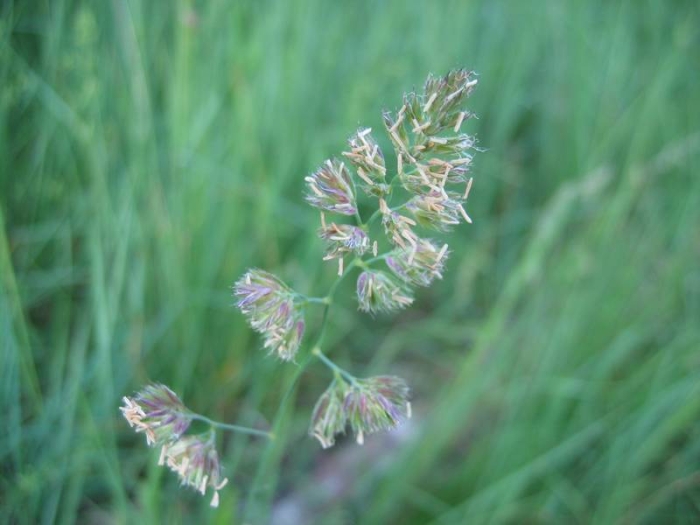Cock’s Foot
(Dactylis glomerata)
Cock’s Foot (Dactylis glomerata)
/
/

Kristian Peters
CC BY-SA 3.0




























































Estimated Native Range
Summary
Cock’s Foot is valued for its high yield and sugar content, making it an excellent choice for hay and pasture. It is also used for erosion control and as a turf grass in some regions. This grass thrives in full sun but can tolerate part shade, and it prefers medium to moist soils with good drainage. While it is generally easy to maintain, it can become invasive outside its native range, spreading through both rhizomes and seed. Gardeners should be cautious of its potential to outcompete native species.CC BY-SA 4.0
Plant Description
- Plant Type: Grass
- Height: 1.4-4 feet
- Width: 1-3 feet
- Growth Rate: Moderate
- Flower Color: N/A
- Flowering Season: Spring
- Leaf Retention: Semi-deciduous
Growth Requirements
- Sun: Full Sun, Part Shade
- Water: Medium
- Drainage: Medium
Common Uses
Bank Stabilization, Drought Tolerant, Erosion Control, Fire Resistant, Low Maintenance
Natural Habitat
Native to meadows, open woodlands, and grasslands across Europe, North Africa, and temperate Asia
Other Names
Common Names: Cocks Foot , Orchard Grass , Cat Grass , Orchardgrass , Barnyard Grass , Cocksfoot Grass , Cockspur , Almindelig Hundegræs , Hundegræs , Wiesen-Knäuelgras
Scientific Names: Dactylis glomerata , Dactylus glomerata , Dactylis glomerata var. vivipara , Dactylis glomerata var. hirsuticaulis , Dactylis glomerata var. flavescens , Dactylis glomerata f. divergens , Dactylis glomerata var. major , Dactylis glomerata var. holcoides , Dactylis glomerata var. multiflora , Dactylis glomerata var. glomerata
GBIF Accepted Name: Dactylis glomerata L.